The launch of Akron’s Rocket Man: From UA, to NASA and beyond

Smith, 18, a senior at Crestwood High School in Mantua, Ohio, ready for a life of rock stardom.
Kenneth Smith has always reached for the stars.
“I wanted to be a rock star,” said the Streetsboro, Ohio, native. “I had hair down to my chest. I was listening to Led Zeppelin and playing in bands. I thought I was cool.”
Too cool for school, in fact.
“When I was in high school, I didn’t care,” he said. “My teachers were always like, ‘You have potential, you should try harder.’ I was like, ‘OK, but I want to be a rock star.’ The only reason I went to college was because it was the thing to do, and I picked biochemistry because I figured it sounded cool, and I would just do that until my music career took off.”
But that career never launched. Instead, in Smith’s first year of college, his father suddenly lost his job, and Smith dropped out of school to work at a label-making factory to support his family. For the next two years, he toiled 60-70 hours per week.
He felt trapped, earthbound. On summer nights, after finishing a double shift, he walked into the cool air and knew that somewhere, beyond the swelter of the shop floor, another world was waiting for him.
From limelight to starlight
Urged by a concerned friend, Smith, who had been interested in science, began volunteering at the Great Lakes Science Center in Cleveland, Ohio.
“I dressed up in this rainbow-colored lab coat,” he said, “and talked about science and performed demonstrations for these little kids and their parents. One of my favorites was where you use liquid nitrogen to slow the air molecules in a balloon so slow that the balloon appears to be deflated as soon as you take it out of the nitrogen. Then, as the air slowly gets back to room temperature, the molecules become more energetic, and the balloon begins to expand. It appears to be magic, but it’s science.”
The children’s curiosity and wonder stirred something inside of him, dilating his heart like that balloon.
“It was weird … those kids, they made me happy again,” he said. “They were so excited, like ‘What! Wow, how did you do that!’ They inspired me.”
He felt something of that childlike wonder every time he passed by the NASA Glenn Research Center’s Visitor Center (housed in the Great Lakes Science Center), where he saw the display of the Apollo Command Module, a capsule that traveled 26.5 million miles in space on the Skylab 3 space mission in 1973.
That hunk of aluminum, which had bathed in the light of the stars, filled him with fascination and pride for the United States: “America, gotta love it,” he thought to himself, smiling.
He later read about the Apollo space program — and particularly the 1975 Apollo-Soyuz joint space mission between the U.S. and the Soviet Union — and began to take pride, not just in his country, but in humanity.
“Here you had two nations in the midst of a cold war, and they set aside their differences to come together for this shared purpose,” he said. “It gave me a new perspective on space exploration, not just as a technological endeavor, but as a source of human connectedness.”
Discovering a new world
Smith’s father found a new job and, Smith, newly inspired, applied to The University of Akron’s aerospace systems engineering bachelor’s degree program. The program is the only of its kind in the country outside of the U.S. Air Force Academy.
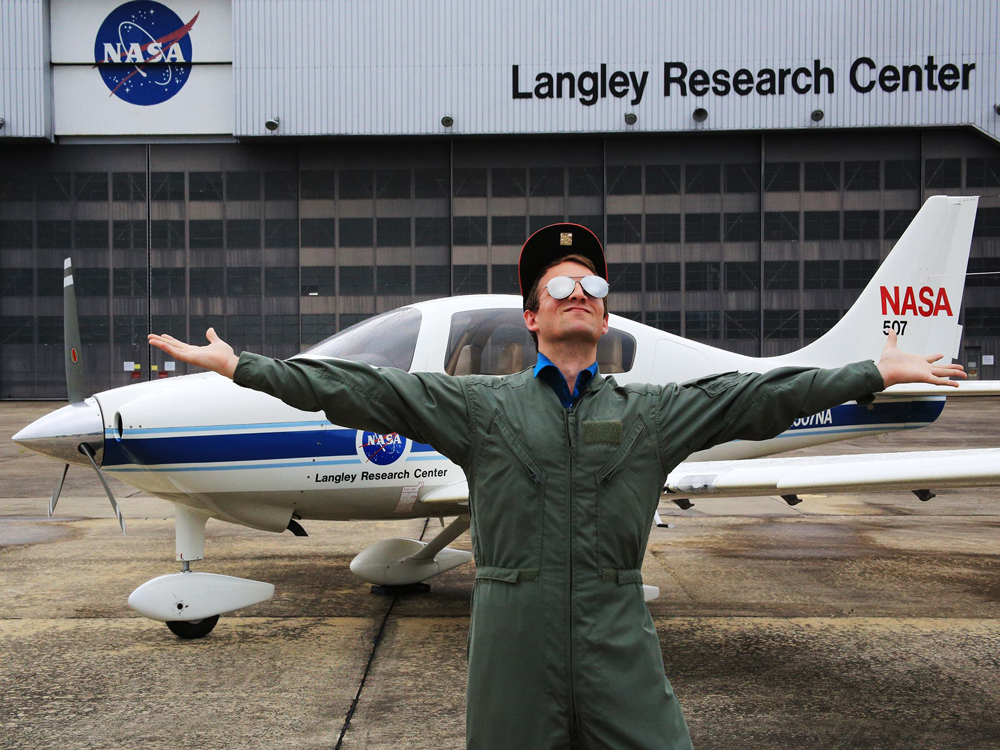
Smith in front of the NASA Langley hangar in 2013, during one of his co-op rotations.
Joining the program was like discovering a new, habitable planet, with everything Smith needed to build a new life.
“I was a broke college dropout,” he said, “and yet I was able to go to a university that had this great program in engineering, with good professors, where I could get a good degree and make networking connections — what more could I ask for?”
Through the Engineering Co-op and Career Placement Office, Smith secured three co-op rotations with NASA Langley Research Center in Virginia, setting the trajectory for his career.
“The greatest strength of the College of Engineering [and Polymer Science] is easily the co-op program,” he said. “People don’t realize how big that is. You talk to people from other engineering schools, and they don’t emphasize it as much. But Akron really emphasizes the hands-on experience, and they put me in contact with NASA to get my first experience. If it wasn’t for that, who knows where I would be.”
Kenneth and the Akronauts
While at UA, Smith, along with his classmate Jesse Batko, was not content to simply read about rockets in the classroom.
“We were like, ‘Let’s launch our own stuff,’ Smith said. ‘What about a rocket team?’ We had no idea what we were doing, but we ended up learning a lot from some amateur rocketry people in Akron, and started building rockets and competing in competitions.”
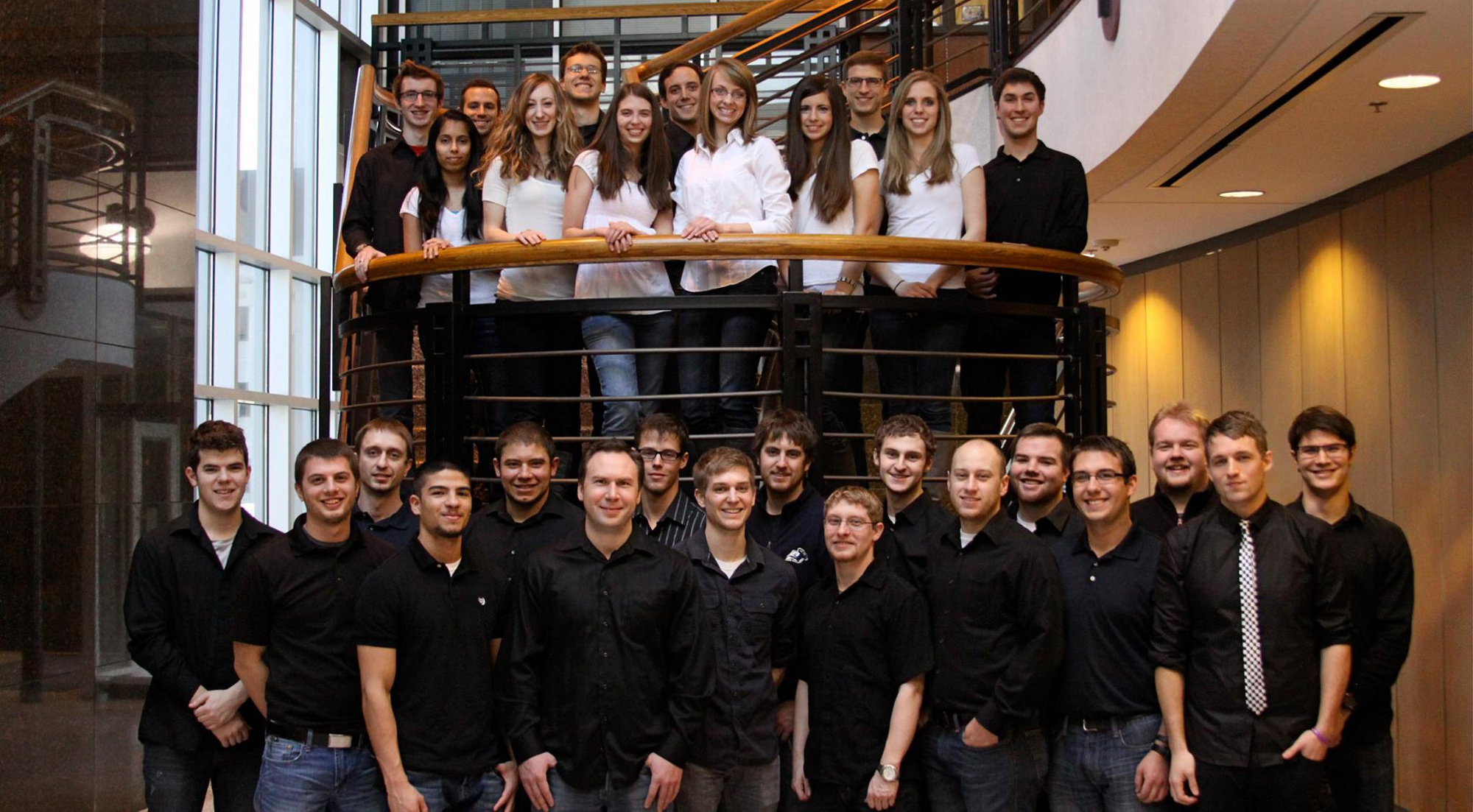
The first group picture of UA’s Akronauts Rocket Design Team in 2014, featuring co-founders Smith (front, second from right) and Batko (front, far right).
Thus, UA’s Akronauts Rocket Design Team was born, with Dr. Francis Loth — Smith’s favorite professor — as its advisor. Since its founding by Smith and Batko in 2014, the team now boasts 60 members and placed in the top five in the NASA Student Launch Competition in 2019 and 2020.
In addition to co-founding the rocket team, Smith served as president of both the Engineering Student Council and the Tau Beta Pi Engineering Honor Society, before graduating from The Drs. Gary B. and Pamela S. Williams Honors College, with numerous awards, in the spring of 2015.
Vindicating those high school teachers who nagged him about his potential, he finished among the top 10 in his class, with a perfect 4.00 GPA.
Coming full orbit
Upon graduating, Smith returned to the NASA Glenn Research Center in Cleveland — not as a volunteer at the Visitor Center, but as a full-time mechanical engineer.
The center, according to Smith, is part of a unique constellation of talent in Northeast Ohio.
“I meet people who are like, ‘There’s a NASA in Cleveland?’ They don’t realize what kind of resources are in the area,” he said. “NASA Glenn, Lockheed Martin, Cleveland Clinic — there are more resources and technical experts in Northeast Ohio, in a lot of different fields, than you will find in many major cities.”
In 2016, Smith enrolled in a master’s degree program in aerospace engineering at the Georgia Institute of Technology. He also spent that summer working for Elon Musk at SpaceX in Los Angeles, Calif. After that, he worked remotely for NASA Langley while finishing his degree. He graduated, again with a 4.00 GPA, in 2018.
That year, he was recognized as one of Aviation Week’s 20 Twenties, after having been recognized, the previous year, as one of Forbes’ 30 Under 30 in the field of science.
Inspiring the next generation
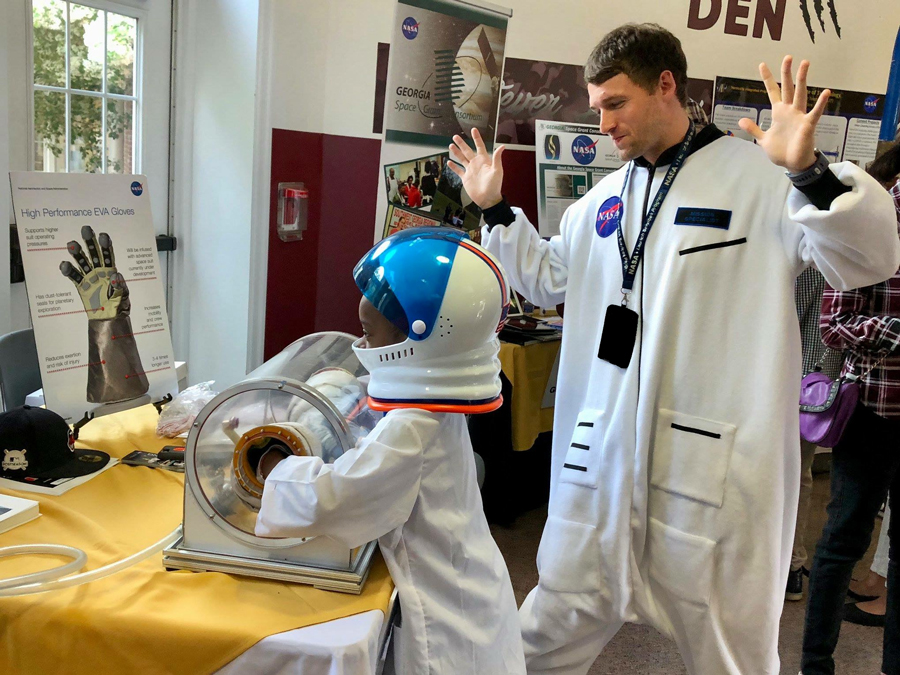
Smith, under the moniker “Ksmooth the Engineering Dude,” provides STEM education outreach to children around the world. He is pictured here at Morehouse College in 2018, demonstrating how difficult it is to work in a pressurized suit.
Smith is currently a dynamics lead at the NASA Johnson Space Center in Houston, Texas, where he is working on the Gateway space station, intended to support long-term human exploration of the lunar surface.
He also travels around the world, providing STEM — or “STREAM,” as he calls it, including an “R” for research — education outreach to students under the persona of “Ksmooth the engineering dude.”
“I remember those kids in the science center who inspired me, and I want to inspire the next generation,” Smith said. “Sharing knowledge is the foundation of human progress. If knowledge is power, the most powerful thing you can do is give it away.”
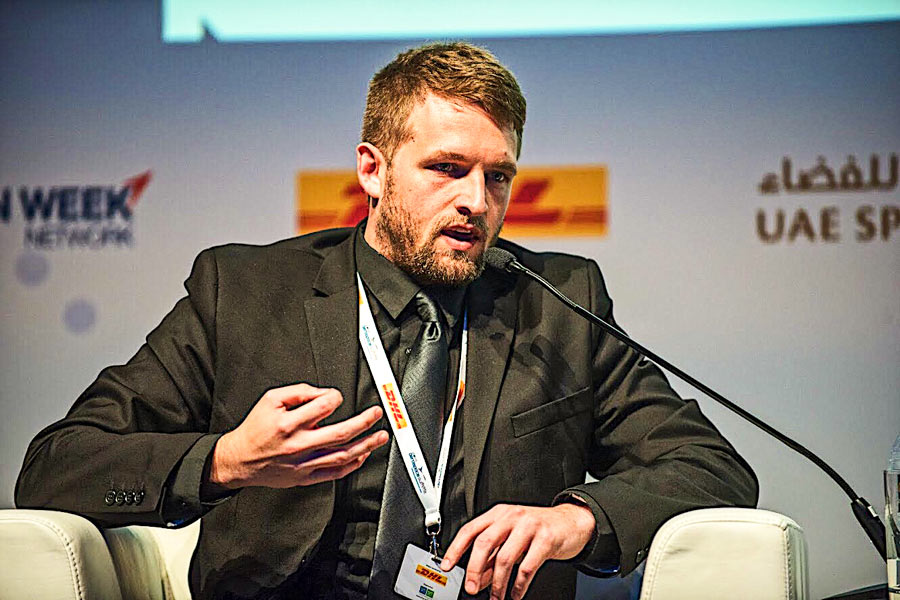
Smith discussing the future of space exploration and the need for cooperation at the Global Aerospace Summit in Abu Dhabi, United Arab Emirates, in 2018.
Smith hopes, ultimately, to share that knowledge someday as a U.S. senator and science policy expert.
“Such experts serve as a bridge between researchers and the public,” he said. “They find ways to translate these esoteric, often highly technical scientific issues for ordinary people, in order to sell it as good policy. We need to do that, because even if we have the greatest scientists in the world, they can’t go anywhere without funding and public support.”
‘Commencing countdown, engines on’
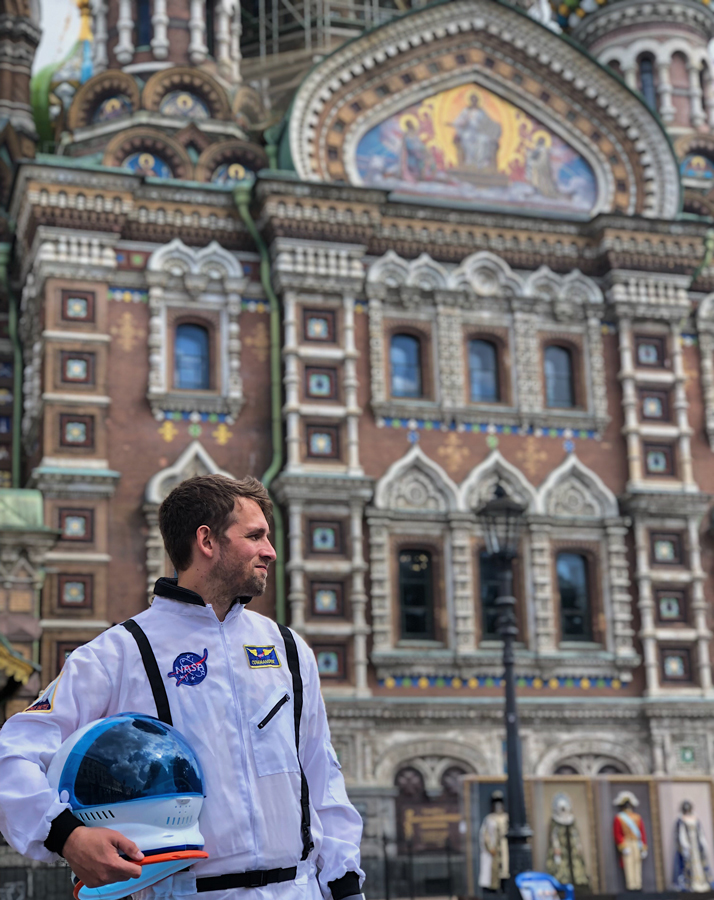
Smith in front of the Church of the Savior on Spilled Blood in St. Petersburg, Russia, during his fellowship in Moscow in 2019.
What’s next for Smith?
He has a checklist.
- Earn a doctorate. He recently applied to the Massachusetts Institute of Technology and Texas A&M University.
- Earn a Private Pilot License, which he hopes to do later this year.
- Achieve peak physical fitness. Last year he ran 1,600 miles total, and he recently, to get experience in extreme conditions, acquired his scuba license.
- Continue to improve his Russian — the lingua franca, as it were, of space travel. In 2019 he was one of eighteen professionals from the U.S., U.K. and Germany — and the only engineer — selected to live, work and study in Moscow, Russia, in the Alfa Fellowship Program.
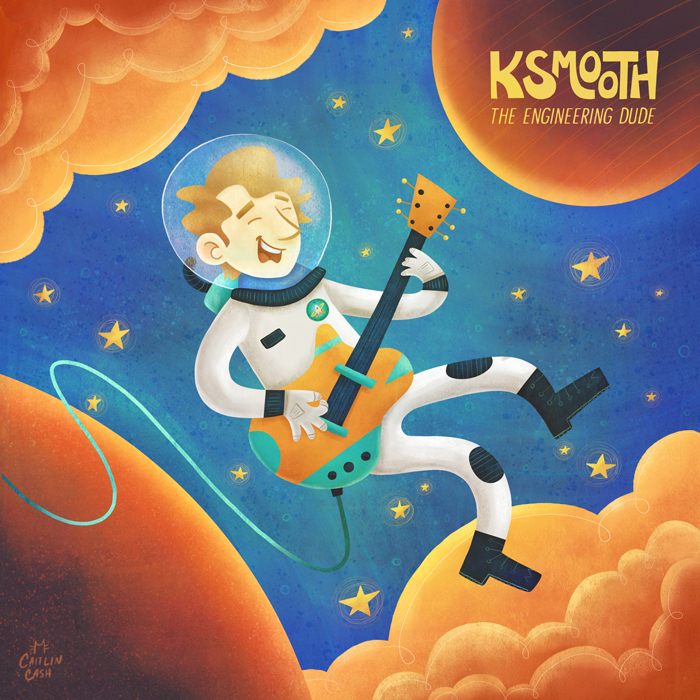
Upcoming album artwork (2021), created by Caitlin Cash.
“At this point, I’m trying to get these extra checkmarks on my resume,” said Smith, who has been preparing, since seeing that Apollo space capsule in the NASA Glenn Visitor Center, for the job application of a lifetime.
“I want to be an astronaut.”
Having always reached for the stars, he just might get there. Or at least to the moon.
And, amid the starlight, he might recapture that old limelight, too.
“I always have my guitar with me,” he said. “I was thinking of that guy, Chris Hadfield, who recorded [David Bowie’s] ‘Space Oddity’ in space. Maybe, when I’m up there, I could do a solo project — not a cover, but something of my own.”
